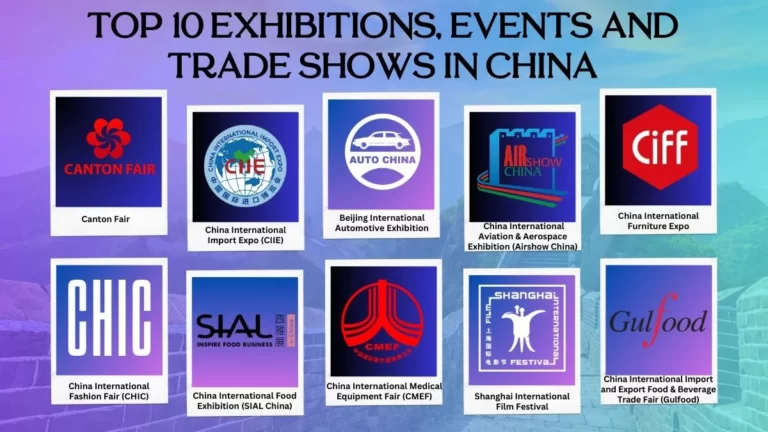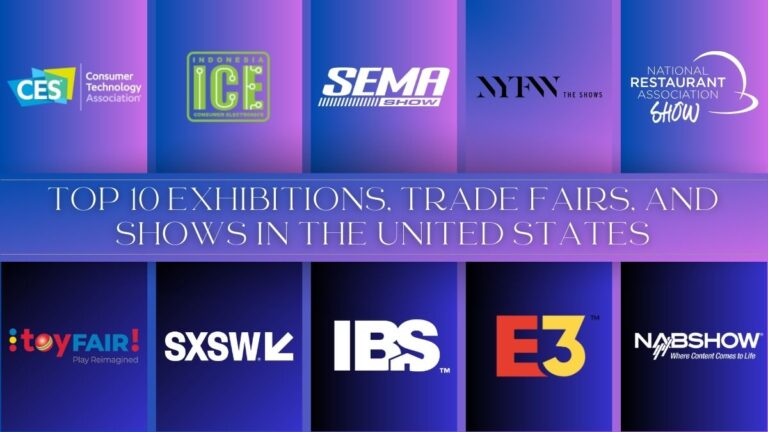Introduction
The Power of Storytelling: Narrative Techniques in Exhibition Curation
In recent years, exhibition curation has evolved significantly beyond simply showcasing artifacts or artworks. Instead, curators are embracing the power of storytelling to create immersive and engaging experiences for visitors. Curators can create impactful and memorable exhibitions by employing narrative techniques, leveraging Technology, and focusing on emotional engagement. In this article, we will explore the various aspects of narrative techniques in show curation, including visitor-centered narratives, interactive storytelling trends, the use of Technology, and innovative curatorial strategies. In the realm of exhibition curation, a significant shift has occurred in recent years, with increasing emphasis on the power of Storytelling and narrative techniques to create transformative and immersive experiences for visitors. Through extensive research, curators have recognized the effectiveness of linear storytelling in exhibitions, providing a coherent and structured narrative arc to guide visitors through complex or abstract topics.
Additionally, the rise of experiential exhibitions has allowed for interactive elements that engage visitors on a deeper level, breaking down barriers between viewer and artwork. Emotional engagement in curation plays a crucial role in creating memorable experiences, as curators tap into visitors’ emotions to foster reflection and connection with the exhibition. Technology has become an integral part of exhibition curation, enabling the integration of multimedia elements that enhance the storytelling experience and captivate visitors. Furthermore, visitor-centered narratives have transformed the curation landscape, catering to individual interests and preferences, thus fostering inclusivity and diversity. Building narrative arcs ensures coherence and comprehension throughout the exhibition, while visitor participation empowers visitors to become co-creators in the experience. Augmented reality and digital storytelling allow for innovative and immersive presentation methods, from historical storytelling in museums to interactive exhibits. Interactive storytelling trends and trending museum narratives further engage visitors, creating immersive and memorable adventures. As museums continue to explore emerging curation techniques, the future of exhibition curation holds promises of impactful experiences that engage visitors through emotional storytelling, utilize multimedia elements, and prioritize visitor-centered narratives, revolutionizing traditional museum practices.
Creating Linear Storytelling in Exhibitions
Creating linear storytelling in exhibitions involves meticulous research in exhibition curation, exploring narrative techniques that engage visitors on both intellectual and emotional levels. The emergence of experiential displays and the integration of Technology have transformed traditional museum practices, allowing for immersive and engaging storytelling experiences. Curators employ visitor-centered narratives, utilizing curatorial storytelling techniques to construct impactful and memorable exhibitions. By incorporating multimedia elements and building narrative arcs, curators guide visitors through a cohesive and coherent journey, encouraging active participation and emotional connection. Engaging visitors through emotional, historical, or digital storytelling ensures that the exhibition leaves a lasting impression and creates meaningful interactions.
Furthermore, visitor participation contributes to curatorial narrative strategies, fostering a sense of ownership and enabling a more inclusive and interactive museum experience. In this ever-evolving landscape of museum curation, innovative techniques like augmented reality and interactive storytelling trends continue to shape narrative-driven visitor experiences, ensuring that exhibitions remain relevant and engaging in the face of emerging curation techniques. One of the main challenges in exhibition curation is presenting information coherently and structuredly. Linear storytelling comes to the rescue by providing a clear narrative arc that guides visitors through the exhibition. This approach ensures visitors can grasp the central message even when dealing with complex or abstract topics. By weaving a compelling story that flows seamlessly from one exhibit to another, curators can provide visitors with a comprehensive understanding of the exhibition’s content.
Embracing Experiential Exhibitions
Embracing Experiential Exhibitions offers a transformative approach to exhibition curation that incorporates cutting-edge Technology and visitor-centered storytelling techniques. Through extensive research and the integration of immersive elements, curators can create impactful and engaging experiences. Experiential exhibitions go beyond traditional displays to evoke emotional engagement and foster a deeper connection between visitors and the content. Curators can create immersive environments transporting visitors into different narratives by leveraging multimedia elements, such as augmented reality (AR) or digital storytelling. This trend in museum curation techniques encourages visitor participation, ensuring they become active participants in the story-driven exhibition experience. Combining emotional storytelling, curatorial narrative strategies, and innovative technologies allows for memorable visitor encounters that redefine the boundaries of traditional museum experiences. Experiential exhibitions take storytelling to the next level by incorporating interactive elements. Visitor participation becomes critical in these exhibitions, encouraging active engagement with the narrative. By allowing visitors to touch, explore, and interact with exhibits, curators break down the barriers between the viewer and the artwork or artifact. Furthermore, integrating Technology, such as touch screens, augmented reality, or virtual reality, enhances the immersion and ensures a vibrant and unforgettable experience.
The Emotional Engagement Factor
The Emotional Engagement Factor plays a pivotal role in exhibition curation, with curators extensively researching how to create impactful and memorable experiences that resonate with visitors. Through curatorial storytelling techniques and narrative techniques in curation, exhibitions become more than mere displays but story-driven journeys that captivate and engage viewers. The infusion of multimedia elements and Technology in exhibition curation enhances the immersive and emotional storytelling experience, allowing for a deeper connection between the visitor and the content. By building narrative arcs and incorporating visitor participation, curators create inclusive and engaging exhibits that leave a lasting impression on the visitors’ minds—emotional storytelling, whether historical or digital, plays a crucial part in crafting memorable visitor-centered narratives. Integrating augmented reality and innovative storytelling techniques adds an extra layer of excitement, enabling a truly immersive and trendsetting museum experience. By embracing this emotional engagement factor, museums can create impactful and meaningful exhibition experiences that cater to their audiences’ evolving needs and expectations. Emotional engagement in curation plays a vital role in creating a deep connection with visitors. Curators understand that tapping into visitors’ emotions can inspire reflection, questioning, and a profound engagement with the exhibition. Emotional storytelling brings personal and relatable dimensions to the narrative, allowing visitors to develop an empathetic bond. By evoking emotions such as joy, sadness, or awe, curators leave a lasting impact on the visitors’ memory and overall experience.
Crafting Visitor-Centered Narratives
Crafting visitor-centered narratives is a crucial aspect of exhibition curation, where extensive research and curatorial storytelling techniques are employed to create impactful and engaging experiences. By embracing Technology and incorporating multimedia elements, curators can build immersive exhibition environments that captivate visitors. Linear storytelling in exhibitions is transformed into a more dynamic and interactive approach, aiming to create emotional engagement and forge a deeper connection between the visitor and the displayed content. Visitor-centered storytelling becomes the focal point, ensuring that the needs and interests of the audience are prioritized throughout the curation process. Through narrative techniques and establishing narrative arcs, curators guide visitors on a story-driven journey that aims to leave a lasting impression. Visitor participation becomes integral to the experience, as interactive elements and augmented reality enhance the overall exhibition engagement. By adopting innovative museum curation techniques, curators can create memorable and trendsetting exhibitions that reflect the evolving landscape of Storytelling in museums. Visitor-centered narratives acknowledge the presence and interests of individual visitors, offering personalized experiences. Gone are the days of a one-size-fits-all approach in curation. Engaging storytelling in art displays allows visitors to explore different narratives based on their preferences, creating a more inclusive and diverse experience. By catering to a wide range of interests and backgrounds, curators ensure that every visitor feels connected to the exhibition.
Multimedia Elements for Enhanced Storytelling
Integrating multimedia elements into exhibition curation is a powerful tool for enhanced storytelling, resulting in impactful and engaging experiences. Through extensive research and embracing Technology, curators can create emotionally engaging and immersive exhibition environments. Using narrative techniques and building narrative arcs, they guide visitors on story-driven journeys that leave lasting impressions. With various multimedia elements, such as audiovisual presentations, interactive displays, and digital installations, curators can captivate audiences and create memorable experiences. This approach encourages visitor participation, enabling active engagement and deeper connections with the exhibition content. From historical storytelling to innovative digital narratives, curators employ various strategies to create compelling story-driven visitor experiences. By staying updated on trending museum curation techniques, curators can ensure their exhibitions remain relevant and impactful in our ever-evolving world. Curators incorporate multimedia elements into their shows to enhance the narrative and create a dynamic presentation. By combining traditional museum displays with audiovisual components, curators provide visitors with a multisensory experience stimulating their curiosity and imagination. From videos and soundscapes to interactive exhibits, multimedia elements enrich the storytelling and captivate visitors, making the exhibition more engaging and memorable.
Building Narrative Arcs for Coherence
Building narrative arcs in exhibition curation is essential for creating coherence and a compelling visitor experience. Through thorough research and the utilization of narrative techniques, curators can construct story-driven museum exhibits that engage and captivate visitors. By incorporating emotional storytelling and immersive exhibition experiences, curators ensure the impactful engagement of viewers. Integrating Technology and multimedia elements enhances the narrative arc, providing visitors with a more interactive and dynamic journey. Integrating interactive displays and augmented reality encourages visitor participation and engagement, creating a memorable and trendsetting museum experience. By employing curatorial narrative strategies and visitor-centered storytelling, curators shape innovative and cohesive exhibitions that leave a lasting impression on museum-goers. This approach ensures that shows convey information and create a coherent narrative that engages visitors emotionally and intellectually. A well-crafted narrative arc is essential for managing the flow of information and maintaining the visitors’ engagement throughout the exhibition. The narrative should have a clear beginning, middle, and end, taking visitors on a journey of discovery. By shaping the show to follow a logical progression, curators ensure visitors can effortlessly follow the narrative thread and comprehend the overarching message.
Visitor Participation as Co-Creators
Visitor participation as co-creators is a pivotal aspect of exhibition curation, where curators conduct extensive research to foster emotional engagement and incorporate Technology to enhance visitor experiences. Through narrative techniques and story-driven museum exhibits, curators aim to captivate visitors and create impactful exhibitions. Engaging storytelling in art displays and integrating multimedia elements contribute to immersive and memorable experiences. By building narrative arcs and employing trending museum curation techniques, curators encourage visitor participation, transforming them into active co-creators of the exhibition. Emotional storytelling in shows becomes a key strategy, allowing visitors to connect with the content on a deeper level. This innovative approach, coupled with augmented reality and digital storytelling, highlights the evolving landscape of visitor-centered Storytelling in museums. By embracing curatorial narrative strategies and historical storytelling techniques, curators shape dynamic and engaging exhibitions that provide visitors with unique, story-driven experiences. Visitor participation is encouraged to empower visitors and foster a sense of ownership within the show. When visitors actively contribute to exhibits through their input, interactions, or collaborative activities, they become co-creators of the experience. This participatory approach engages visitors on a deeper level and allows them to connect with the narrative personally and meaningfully.
Leveraging Technology for Innovation
Leveraging Technology in exhibition curation is crucial for driving innovation and creating impactful visitor experiences. Through extensive research and embracing technological advancements, curators can revolutionize how museums engage audiences. By incorporating Technology into exhibition curation, such as augmented reality, interactive installations, and digital storytelling, curators can deliver immersive and memorable experiences that captivate visitors. These innovative approaches go beyond traditional methods, allowing for engaging storytelling and emotional connections with the exhibits. With the integration of multimedia elements and narrative techniques, curators can build cohesive and story-driven museum exhibits that resonate with the audience. By embracing trending museum curation techniques and staying at the forefront of innovative practices, curators can continuously evolve and provide visitors with dynamic and cutting-edge experiences. Technology in exhibition curation opens new doors for creating impactful and immersive story-driven visitor experiences that go beyond what traditional museum narratives can achieve. Technology’s integration into exhibition curation opens up new possibilities and opportunities as technology advances. Augmented reality (AR) is one such technology revolutionizing the curation landscape. By overlaying digital content onto the physical environment, AR provides an interactive and immersive experience. Historical storytelling in museums can be enhanced through AR, allowing visitors to witness historical events or explore artifacts from different periods.
Digital Storytelling for Creative Presentations
Digital Storytelling has become integral to exhibition curation, allowing curators to deliver creative and engaging presentations. Through extensive research and the integration of Technology, curators enhance emotional engagement and create immersive experiences for visitors. Story-driven museum exhibits are created using digital storytelling techniques, captivating viewers and leaving a lasting impact. With the inclusion of multimedia elements and trending museum curation techniques, curators craft memorable exhibitions that resonate with visitors. Augmented reality further adds to the interactive and immersive nature of the exhibits, engaging visitors and encouraging their active participation. By utilizing digital tools and techniques, curators can build narrative arcs that guide visitors through a cohesive and impactful journey in the museum. This innovative approach to exhibition curation combines historical storytelling, emotional engagement, and visitor participation to create compelling and trendsetting museum experiences. Digital storytelling in exhibits offers another powerful tool for curators to engage visitors. By leveraging digital technologies, curators can incorporate videos, animations, interactive maps, and digital archives to present narratives in compelling and creative ways. Digital elements augment the storytelling experience, bringing the exhibition to life dynamically and captivatingly.
Interactive Storytelling Trends
Interactive storytelling is at the forefront of exhibition curation, as curators conduct thorough research to ensure emotional engagement and leverage Technology to create impactful experiences. Through engaging storytelling techniques, curators enhance art displays and curate immersive exhibitions that leave a lasting impression on visitors. They successfully build narrative arcs that captivate and engage by incorporating multimedia elements and utilizing innovative museum curation techniques. Visitor participation is encouraged, making them an integral part of storytelling. Emotional storytelling in exhibitions becomes a focal point, inviting visitors to connect with the content on a deeper level. These interactive storytelling trends, combined with augmented reality and digital storytelling, add depth and dimension to exhibits, resulting in memorable and immersive experiences. From historical storytelling to story-driven visitor experiences, museums are continuously adapting to incorporate the latest trending narratives in their curatorial practices. Story-driven visitor experiences are gaining popularity in the realm of exhibition curation. Curators are providing opportunities for visitors to participate actively in unfolding narratives. This can take the form of solving puzzles, making choices that affect the story’s outcome, or engaging in role-playing activities. Curators turn the exhibition into an immersive and memorable adventure by offering visitors a level of agency.
Embracing Diverse and Inclusive Narratives
Embracing diverse and inclusive narratives is a vital aspect of exhibition curation, ensuring that museums cater to a wide range of visitors and reflect the rich tapestry of human experiences. Through extensive research and thoughtful curation, emotional engagement becomes a priority, allowing for impactful and inclusive exhibition experiences. Curators can utilize Technology in exhibition curation to amplify diverse voices and perspectives, creating engaging storytelling in art displays that resonate with visitors from various backgrounds. By incorporating multimedia elements and employing narrative techniques, curators build immersive and inclusive exhibition experiences that encourage visitor participation and foster a sense of connection. Historical storytelling in museums can also be enhanced through digital storytelling, augmented reality, and other innovative museum curation techniques, enabling diverse narratives to be presented in new, compelling ways. By embracing and amplifying varied and inclusive narratives, museums can create memorable visitor experiences that foster empathy, understanding, and a sense of belonging for all. Trending museum narratives are embracing diverse themes, highlighting stories and perspectives that were previously overlooked. Curators explore social, cultural, and historical issues, amplify marginalized voices, and champion inclusivity. This shift sparks curiosity, fosters empathy, and encourages self-reflection among visitors, creating more meaningful and transformative experiences.
Exploring Emerging Curation Techniques
Exploring emerging curation techniques is an essential aspect of exhibition curation, as curators conduct thorough research to stay abreast of the latest trends and developments. By embracing Technology in exhibition curation, curators can create impactful and immersive experiences that engage visitors emotionally. Innovative museum curation techniques, such as integrating multimedia elements and incorporating engaging storytelling in art displays, are employed to ensure memorable experiences for visitors. Narrative techniques are crucial in building cohesive and captivating exhibitions, focusing on creating narrative arcs that guide visitors through a compelling journey. Visitor participation is encouraged to develop a sense of engagement and connection. Augmented reality and digital storytelling further enhance the exhibition experience, allowing for the exploration of historical storytelling in museums and the creation of story-driven visitor experiences. With a keen eye for trending museum narratives, curators continuously push the boundaries of traditional exhibition curation to deliver unique and captivating experiences to their audiences. Curators are evolving from mere custodians of artifacts and artworks to storytellers and experience creators. This innovative approach challenges the conventional notion of museums as static knowledge repositories, transforming them into dynamic spaces for exploration and interaction. By continuously exploring emerging curation techniques, curators are shaping the future of exhibition experiences.
Conclusion
In conclusion, the power of storytelling and the implementation of narrative techniques in exhibition curation cannot be underestimated. Through extensive research and a focus on emotional engagement, curators can create impactful and immersive exhibition experiences. Utilizing Technology and incorporating engaging storytelling in art displays can captivate visitors and leave a lasting impression. By building narrative arcs and integrating multimedia elements, curators craft exhibitions, allowing visitors to participate actively in storytelling. Emotional storytelling is significant in forging meaningful connections with the content and enhancing visitor experiences. Augmented reality, digital storytelling, and innovative museum curation techniques further elevate exhibits, offering new perspectives and embracing the latest trending narratives. The result is a harmonious blend of historical storytelling, visitor participation, and immersive story-driven experiences that ensure museums truly engage, educate, and inspire their diverse audiences. The power of storytelling in exhibition curation cannot be underestimated. From linear narratives to immersive experiences, emotional engagement, and interactive elements, this new curatorial approach caters to visitors’ evolving expectations and desires. By employing narrative techniques, leveraging Technology, and embracing inclusivity, curators can shape meaningful encounters between the audience and the art or artifacts, enabling vibrant and transformative journeys for all. As museums and galleries continue to embrace these trends, the future of exhibition curation looks promising, focusing on creating impactful and captivating experiences that resonate with every visitor.











